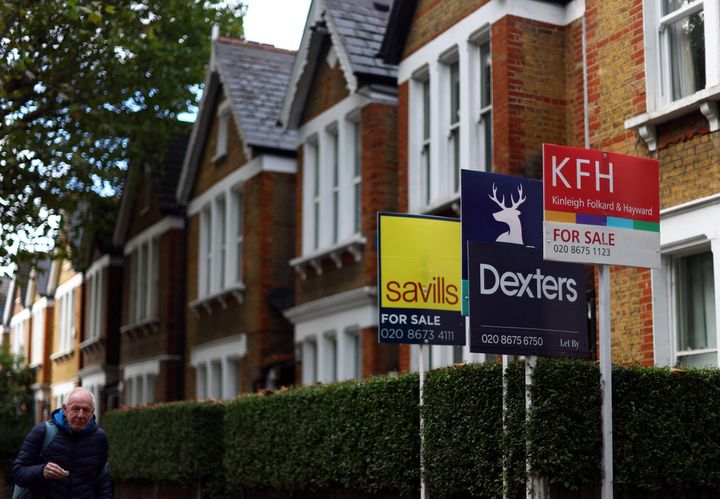
If the short-lived Liz Truss premiership was going to be remembered for anything, it was the disastrous mini-budget that saw homeowners scrambling for new mortgage deals as the cost of re-financing soared.
But on Tuesday, a key British mortgage rate hit a 15-year high and rose above the levels reached in the aftermath of that crisis in the autumn, adding to the grim backdrop to the Bank of England’s battle against stubbornly-high inflation.
What is the new mortgage average?
The average two-year fixed residential mortgage rate climbed to 6.66%, narrowly exceeding the 6.65% touched on October 20, and the highest since August 2008 when it stood at 6.94%, according to data provider Moneyfacts.
What happened under Liz Truss?
Truss resigned as prime minister in October following the chaotic mini-budget put together with ex-chancellor Kwasi Kwarteng.
The £45 billion of unfunded tax cuts announced on September 23 spooked the markets – leading to the pound dropping to an all-time low against the dollar and a crisis in the pensions market.
Britain’s housing market activity staged a recovery in early 2023 from the turmoil, but homeowners and buyers have faced renewed mortgage pain in recent months.
A source close to Truss told The Times that had her “pro-growth agenda” been pursued Britain would be now enjoying a “much-needed shot in the arm”, adding: “It was always clear interest rates were going to have to be raised from the artificially low levels of recent years.”
What’s causing it?
Fixed mortgage deal rates have risen rapidly in recent weeks as a result of stickier-than-expected inflation, with data last month showing the downward trajectory stalling at 8.7%.
The main way to curb inflation is by hiking interest rates, and the Bank of England raised the base rate for the 13th month in a row in June. The hike to 5% – a 15-year high – raised fears that the British economy is heading for a recession.
Britain’s surge in inflation initially reflected a leap in energy costs after Russia’s invasion of Ukraine, compounding existing supply-chain bottlenecks created by the Covid-19 pandemic.
But those factors have now faded away significantly, and rises in food prices and wages are now said to be the driving forces behind inflation pressures.
Is there more to come?
Probably. The financial markets are betting on the Bank;s benchmark rate peaking at 6.5%, up from 5% now, which could mean mortgage rates above 7.5%.
On Tuesday, stronger-than-expected wage growth added to interest rate fears, which will cause misery for homeowners who have to refinance their mortgages in the coming months.
Are people struggling yet?
On Tuesday, lenders including Nationwide, Lloyds Bank and Santander told MPs on the Treasury committee that mortgage payment arrears had increased slightly but remained below pre-pandemic levels.
However, most households have yet to feel the impact of higher borrowing costs as they are still locked in to previous deals.
British homebuyers typically take out mortgages with an interest rate that is fixed for two or five years, and then remortgage on to a new fixed rate or accept a variable rate.
Trade body UK Finance estimates 800,000 families will need to refinance loans in the second half of this year, and a further 1.6 million in 2024 of a total of nearly 7 million fixed-rate mortgages that are outstanding.
Analysis from the Resolution Foundation, a think tank, shows the average homeowner who refinances a home loan in 2024 will have to pay an extra £2,900 a year.